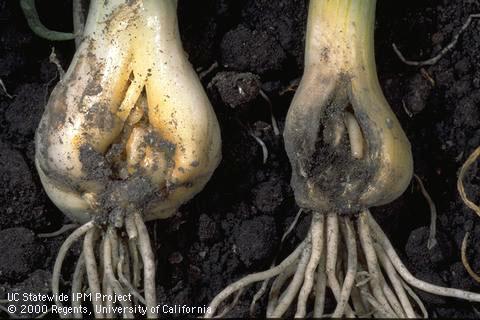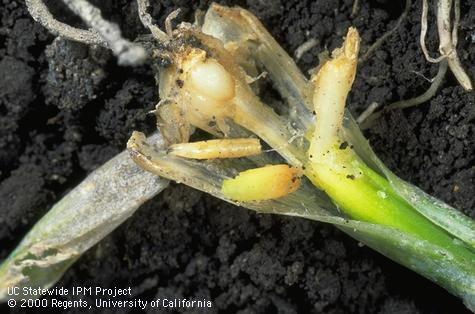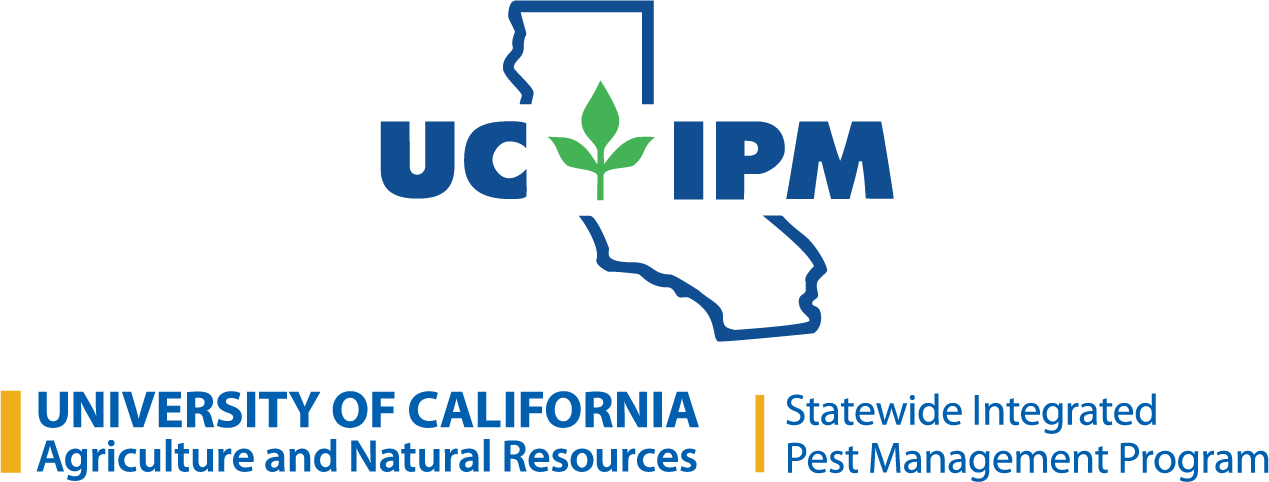Identification
Adult maggots are small gray flies that are somewhat smaller than houseflies. When at rest, they keep their wings folded one over the other. Larvae are creamy white, legless maggots about 10 mm long.

Life Cycle
Onion maggot flies lay eggs in the soil near the germinating plants. Larvae feed on the developing seedling and on the expanding bulb. Mature larvae pupate in the soil. There are several generations per year. Maggots prefer soils heavy in organic matter where they can survive and move to seeds. Onion maggots are generally restricted to cooler coastal climates.
Damage
Onion maggots can attack germinating seedlings, feeding on the developing roots and epicotyl. They can continue to feed on the expanding bulb during later stages of growth, creating tunnels and cavities in the bulb and underground stem. Plants may die or become wilted and yellow. Maggots generally do not cause economic damage to garlic; they are primarily pests of onions.

Solutions
Prevention is the best management strategy. Avoid overfertilization with manure; maggots prefer to lay eggs in rich soil. Disc weeds at least 2 weeks before planting. Plant transplants or pregerminated seeds. Cover seedbeds with protective cloth or cover individual plants to prevent adults from laying eggs near plants.
